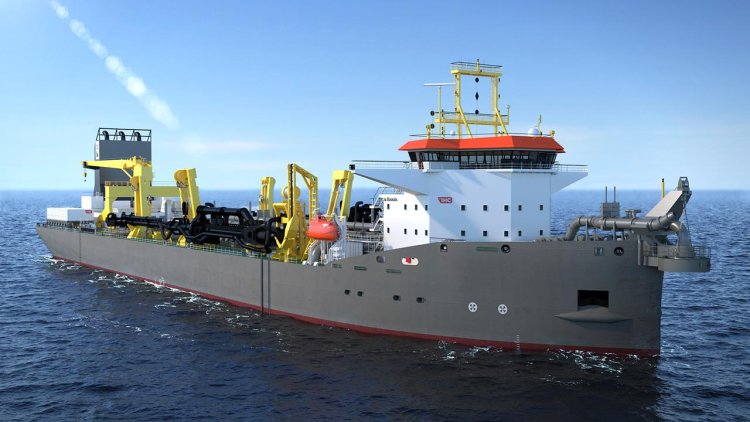Boskalis orders large 31,000 m3 trailing suction hopper dredger from Royal IHC
The vessel will have a hopper capacity of 31,000 m3 and will be built at the IHC yard in Krimpen aan den IJssel, the Netherlands, over the next few years.

Boskalis has signed a contract with Dutch shipbuilding company Royal IHC to build a large state-of-the-art trailing suction hopper dredger. The award of the contract follows an extensive design phase.
The new vessel will be one of the largest trailing suction hopper dredgers in the Boskalis fleet. Noteworthy features of the energy-efficient vessel design include the full diesel-electric installation and propulsion via Azipods™. These technological innovations, combined with the optimized underwater hull design and an advanced automation system, will contribute to a significantly lower fuel consumption.
The vessel is also being prepared for the use of (green) methanol as an alternative fuel. The methanol plant and storage tanks on board make this switch possible. Furthermore, the dual fuel main engines are equipped with two-stage turbos and can be powered by both conventional fuels and more sustainable alternatives such as biodiesel and methanol, providing for a substantial reduction of CO2 emissions.
With a double suction pipe equipped with underwater pumps and two discharge pumps with a combined discharge capacity of 15,000 kW, the new trailing suction hopper dredger is well suited to dredging material and discharge this over long distances to a reclamation site. This powerful performance also contributes to increased efficiency of the dredging process.
The new vessel is expected to enter service in mid-2026. Thanks to its advanced design and state-of-the-art technology, this vessel marks a significant step in making Boskalis’ dredging fleet more sustainable.
A trailing suction hopper dredger is a vessel used to extract and transport sand or sediment by dragging a trailing head attached to a long suction pipe with water jets while travelling over the seabed, as a result of which the material to be dredged is loosened in front of the suction head. Large centrifugal pumps transport the dredged material to the hopper from where it is later deposited (through bottom doors) or discharged (through a pipeline or sprayed - rainbowed - across the bow) to a reclamation area. Applications of the hopper dredger include the deepening and maintenance of ports and waterways and protecting coastlines from erosion and the effects of climate change.



























